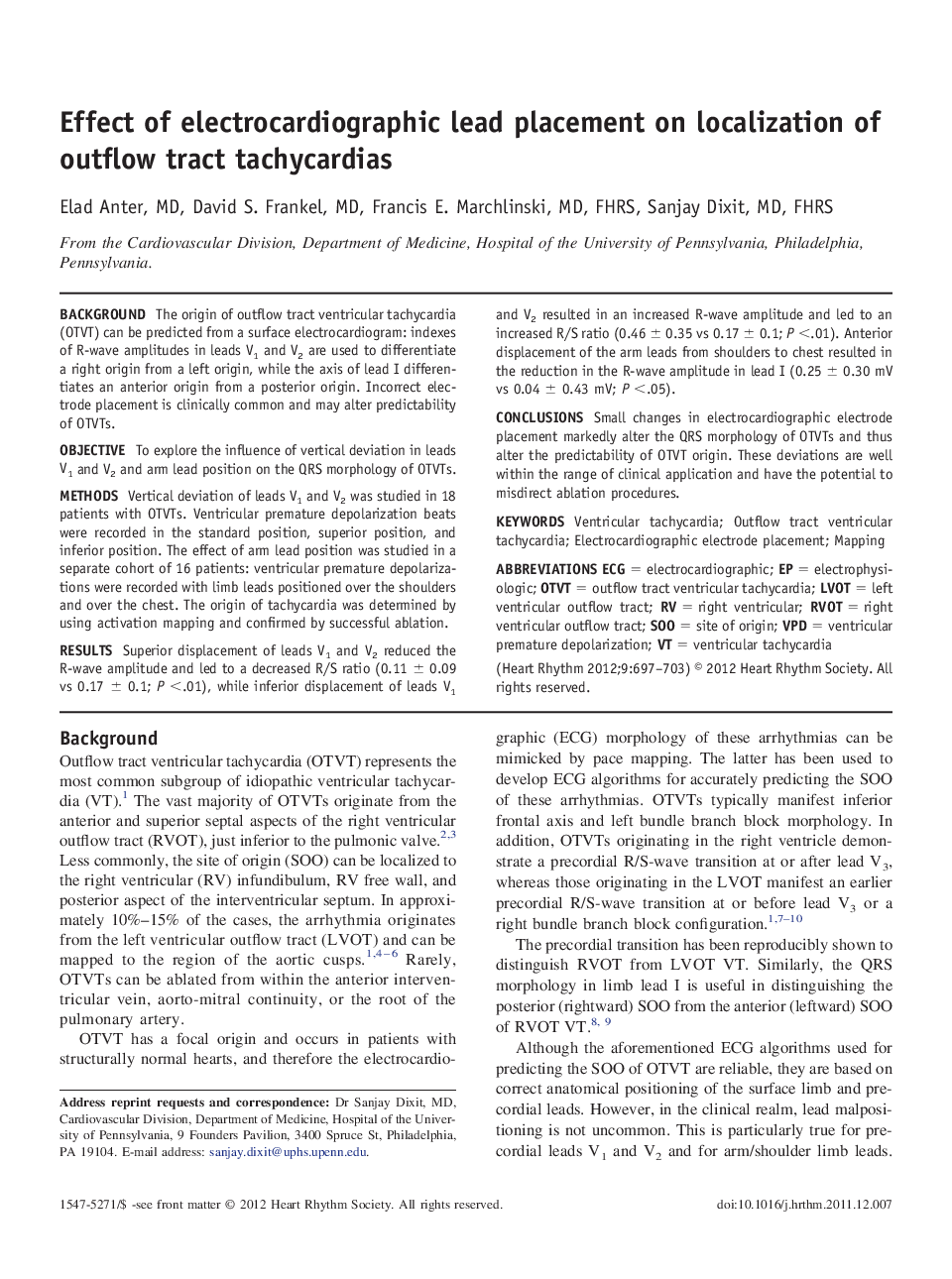| Article ID | Journal | Published Year | Pages | File Type |
|---|---|---|---|---|
| 2922440 | Heart Rhythm | 2012 | 7 Pages |
BackgroundThe origin of outflow tract ventricular tachycardia (OTVT) can be predicted from a surface electrocardiogram: indexes of R-wave amplitudes in leads V1 and V2 are used to differentiate a right origin from a left origin, while the axis of lead I differentiates an anterior origin from a posterior origin. Incorrect electrode placement is clinically common and may alter predictability of OTVTs.ObjectiveTo explore the influence of vertical deviation in leads V1 and V2 and arm lead position on the QRS morphology of OTVTs.MethodsVertical deviation of leads V1 and V2 was studied in 18 patients with OTVTs. Ventricular premature depolarization beats were recorded in the standard position, superior position, and inferior position. The effect of arm lead position was studied in a separate cohort of 16 patients: ventricular premature depolarizations were recorded with limb leads positioned over the shoulders and over the chest. The origin of tachycardia was determined by using activation mapping and confirmed by successful ablation.ResultsSuperior displacement of leads V1 and V2 reduced the R-wave amplitude and led to a decreased R/S ratio (0.11 ± 0.09 vs 0.17 ± 0.1; P <.01), while inferior displacement of leads V1 and V2 resulted in an increased R-wave amplitude and led to an increased R/S ratio (0.46 ± 0.35 vs 0.17 ± 0.1; P <.01). Anterior displacement of the arm leads from shoulders to chest resulted in the reduction in the R-wave amplitude in lead I (0.25 ± 0.30 mV vs 0.04 ± 0.43 mV; P <.05).ConclusionsSmall changes in electrocardiographic electrode placement markedly alter the QRS morphology of OTVTs and thus alter the predictability of OTVT origin. These deviations are well within the range of clinical application and have the potential to misdirect ablation procedures.
